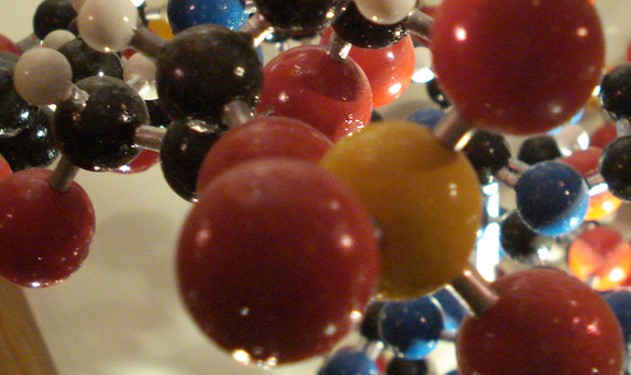Module 2: The Chemical Foundation of Life
Section outline
-

All living organisms are composed of combinations of atoms. Some of the most abundant atomic elements in living organisms include carbon, hydrogen, nitrogen, oxygen, sulfur, and phosphorus. These are the building blocks of the nucleic acids, proteins, carbohydrates, and lipids that are the fundamental components of living matter. These are combined to form cells, tissues, organ systems, and entire organisms. Because atoms obey the natural laws that govern all energy and matter, the fundamentals of physics and chemistry are important for gaining insight into biological processes.
Image from Biology 2e from OpenStax, licensed under Creative Commons Attribution License v4.0 with the image credit modification of work by Christian Guthier.
Upon completion of this module, you will be able to:- Define matter and elements (Course Outcome # 2)
- Describe the interrelationship between protons, neutrons, and electrons (Course Outcome # 2)
- Compare the ways in which electrons can be donated or shared between atoms (Course Outcome # 2)
- Explain the ways in which naturally occurring elements combine to create molecules, cells, tissues, organ systems, and organisms (Course Outcome # 2)
- Describe the properties of water that are critical to maintaining life (Course Outcome # 2)
- Explain why water is an excellent solvent (Course Outcome # 2)
- Provide examples of water’s cohesive and adhesive properties (Course Outcome # 2)
- Discuss the role of acids, bases, and buffers in homeostasis (Course Outcome # 2)
- Explain why carbon is important for life (Course Outcome # 2)
- Describe the role of functional groups in biological molecules (Course Outcome # 2, #5)
To achieve these objectives:
- Read the Module 2 Introduction
- Read and view the materials in the Module 2 Pressbooks book, embedded below by section for the chapter titled The Chemical Foundation of Life
- Complete the assignment and discussion forum post and response.
This module's lab activity is included as well, to occur in the lab class. Slides are available to accompany the class lecture.
Module Pressbooks Resources and Activities
You will find the following resources and activities in this module at the Pressbooks website. Click on the links below to access or complete each item.
- Define matter and elements (Course Outcome # 2)
Background Colour
Font Face
Font Kerning
Font Size
Image Visibility
Letter Spacing
Line Height
Link Highlight
Text Colour
